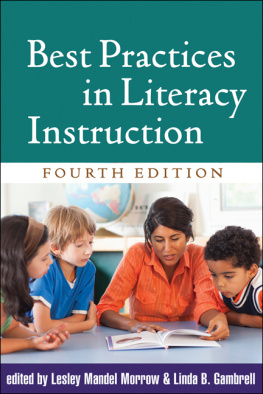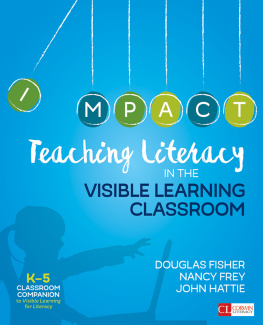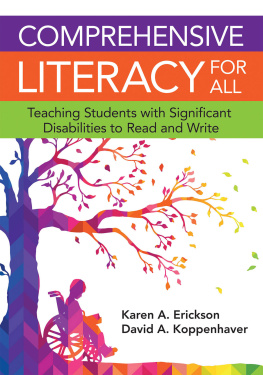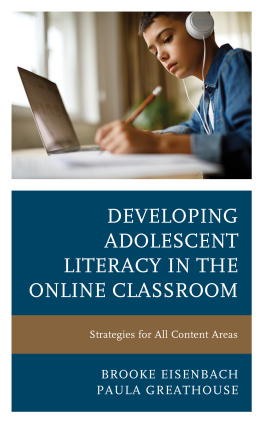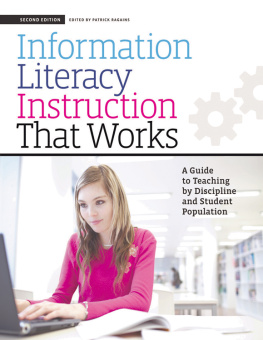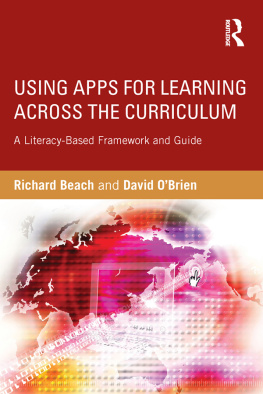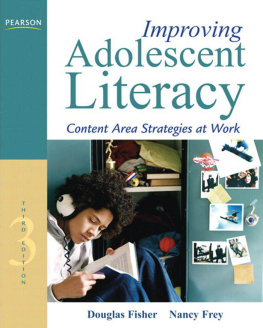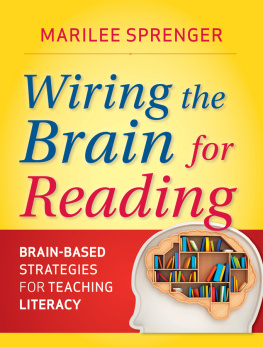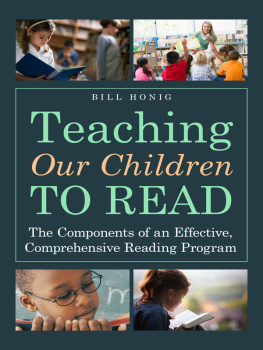There is hard work ahead as we strive to improve reading education and provide comprehensive literacy instruction for all our students.
P RESSLEY (2007, p. 404)
This chapter will:
Present and discuss features of evidence-based best practices for comprehensive literacy instruction.
Discuss the importance of determining and differentiating best practices to provide all students with opportunities for literacy learning.
Discuss the important role of teachers as visionary decision makers.
Present 10 evidence-based best practices for comprehensive literacy instruction.
Propose a mindset for thoughtful incorporation of best practices for comprehensive literacy instruction.
Students must be literate in order to succeed in school and in the workplaces of tomorrow. However, evidence across the past four decades indicates that the achievement has not been equal for all children in American schools (Morrow, Rueda, & Lapp, 2009; National Assessment of Educational Progress, 2007). There is considerable evidence of a growing gap in reading achievement among (1) minority and nonminority students, (2) students from poorer and richer families, (3) students who are native English speakers and those who are English language learners (ELLs), and (4) students identified for special education services and those in regular education (Morrow et al., 2009). Consider the following statistics that further substantiate the achievement gap:
- By age 2, children who are read to regularly by an adult have greater language comprehension, larger vocabularies, and higher cognitive skills than children read to less often (Raikes et al., 2006).
- In middle-income neighborhoods the ratio of books per child is 13 to 1, while in low-income neighborhoods the ratio is 1 age-appropriate book for every 300 children (Dickinson & Neuman, 2006).
- In the United States, approximately 13 million children live in poverty. Poverty places children at higher risk for a number of problems, including those associated with brain development and social and emotional development (Every Child Matters, 2008, www.everychildmatters.org/homelandinsecutity/geomatters.pdf ).
- Each school day, seven thousand students become dropouts. That adds up to 1.2 million students who will not graduate high school each year (Alliance for Excellent Education, 2007).
- Approximately 78% of juvenile crime is committed by high school dropouts ( www.edubook.com/causes-and-prevention-of-high-school-dropouts/10917/ , retrieved August 7, 2010; www.readingfoundation.org/Economics_of_Early_Childhood_Literacy.jsp , retrieved August 7, 2010).
- The average annual income for a high school dropout in 2004 was $16,485, compared with $26,156 for a high school graduate, a difference of $9,671 ( factfinder.census.gov/jsp/saff/SAFFInfo.jsp?_pageId=sp2_economic&_submenuId , retrieved August 7, 2010).
- The Progress in International Reading Literacy Study (Programme for International Student Assessment; PISA) concluded that finding ways to engage students in reading may be one of the most effective ways to leverage social change. According to the PISA report, being an enthusiastic and frequent reader was more of an advantage than having well-educated parents in good jobs (Programme for International Student Assessment; PISA, 2006; nces.ed.gov/surveys/pirls/pirls2006.asp, retrieved August 7, 2010 ).
These statistics reflect the many challenges teachers face in classrooms, as well as the importance of providing effective literacy instruction for all students. Gordon (2009) contends that every child must be visible if we are to succeed as a world-class nation (p. ix). According to Gordon:
It is a source of shame that our society has moved slowly to achieve the necessary accommodations and differentiations in educational treatments, and has essentially avoided serious effort at providing improved circumstances of life for our most seriously socially disadvantaged children. It is the societys good fortune that some of us have taken seriously the need for accommodation and differentiation in the teaching and learning transactions made available to diverse populations of students. (2009, p. x)
The authors of the chapters in this volume are among the educators who take seriously the need for accommodation and differentiation to enhance literacy development for all students, many of whom struggle because of life circumstances. Any serious effort to close the reading achievement gap will require attention to all aspects of literacy teaching and learning. This challenge can only be met with instruction and assessments that are grounded in evidence-based best practices and the continued search for principles of learning that work for all our students (Garcia & Wiese, 2009).
We must acknowledge that some students are at risk of academic failure because of their life conditions. Furthermore, we need to acknowledge that school cultures require specialized academic abilities. Life conditions and experiences that do not support and encourage the development of those specialized academic abilities tend to produce children who are deficient in the ability to handle academic work (Gordon, 2009, p. ix). We think Gordon has it right when he states, We know in the 21st century that the absence of a certain developed ability because of the absence of opportunity to learn should not be interpreted as absence of ability to learn, and the recognition of the fact of diverse human characteristics demands accommodation and differentiation in pedagogical treatment (p. x).
During the past decade (20002010) literacy instruction has continued to be a hot topic in education, in the media, and with politicians at every level of government. Federal programs and national reports from the previous decade, such as No Child Left Behind (NCLB, 2002) and the National Reading Panel (NRP) report (NICHHD, 2000), continue to influence both assessment and instruction in our schools. As we move into the next decade it is clear that the following initiatives will influence literacy research, policy, and practice: response to intervention (NASDSE, 2010), Race to the Top (U.S. Department of Education, 2010), and Common Core State Standards for English Language Arts (Common Core State Standards Initiative, 2010).

